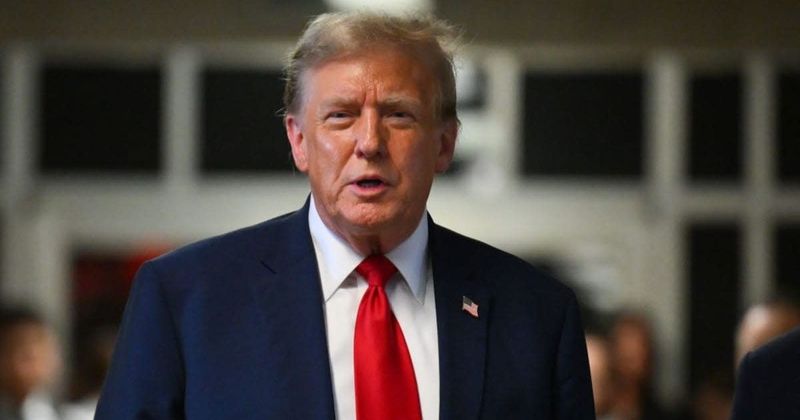Michael Hastings Car Crash Conspiracy Solved By WikiLeaks Vault 7?
The car crash that killed Michael Hastings has been hotly contested by conspiracy theorists ever since it took place in 2013, and the flames are now being fanned once again by details released in WikiLeaks’ Vault 7 trove, let loose on Tuesday.
Michael, whose most prominent work had been published in Rolling Stone and Buzzfeed, was one of the fiercest critics of the surveillance state and the Obama administration’s response to whistleblowers, particularly efforts to coerce journalists into revealing their sources. His final story, “Why Democrats Love To Spy on Americans,” was published just weeks before his death; Hastings perished in a fiery single-car accident in Los Angeles.
Even four years later, not everyone has accepted that the event that killed Michael was really an accident. Those critics have been further incensed by a recent revelation in WikiLeaks’ Vault 7 release, which has detailed the extent of the CIA’s surveillance efforts to previously unconfirmed devices like smartphones and TVs.
As of October 2014, the CIA was also looking into “infecting the vehicle control systems used by modern cars and trucks.” The documents published by WikiLeaks do not detail for what purpose such technology would be used, but the leaks organization does add that “it would permit the CIA to engage in nearly undetectable assassinations.”
At the time of his death, Hastings was working on a profile of CIA director John Brennan. This information was confirmed by his widow, Elise Jordan, who said that her husband’s final article would likely be published by Rolling Stone in the coming months. The piece never went to press.
A later WikiLeaks publication indicated that at least Michael Hastings himself believed he was under FBI investigation before his car crash. The whistleblowing organization also published further unconfirmed emails alleging that this suspicion was based in fact, including one that claimed Brennan himself was the driving force behind the crackdown on investigative journalists, reported the Blaze.
Michael Hastings contacted WikiLeaks lawyer Jennifer Robinson just a few hours before he died, saying that the FBI was investigating him.
— WikiLeaks (@wikileaks) June 19, 2013
While the Los Angeles Police Department found no signs of foul play, conspiracy theorists were not satisfied with the official explanation behind the accident. Michael had already made several enemies within the U.S. government. Perhaps the most notable was U.S. Army General Stanley McChrystal, who was fired from his position as commander of NATO’s International Security Assistance Force in the Afghanistan war due to Hastings’ reporting. The reporter said that he later received death threats from people associated with the McChrystal Group, a Virginia-based consulting firm.
In the days before his death, Michael himself reportedly asked a neighbor if he could borrow her car because he was concerned his own was being tampered with, reported Newser. His family doesn’t, however, seem to take this as evidence that Hastings was murdered, but rather links it to a long stream of paranoia brought on by his work investigating the U.S. government, PTSD, and drug use.
The drug use included a long-term on-and-off battle with alcoholism as well as dabbling in marijuana, DMT, and meth, which was found in his system by the coroner upon his death. In a lengthy profile characterizing the deceased reporter as irascible and unpredictable, New York Magazine reported anecdotes of him repeatedly referring to a Wall Street Journal reporter with whom he quarreled as a “c**t” and accelerating to 90 miles per hour while driving as his wife read him a critical review of one of his books.
“As they were driving, [his wife] was e-mailed a review of the book. Michael asked his wife to read it aloud. ‘From the opening sentence, you could tell what it was leading up to,’ [his friend] recalls. ‘It was more and more faint praise; you could see the hammer coming.’ Hastings, fuming, said, ‘All right, that’s enough.’ But after a minute of silence, he said, ‘All right, read the rest.’ As his wife read on, the car moved faster and faster on the expressway. Finally, the friend in the front seat, said, ‘Mike, do you know we’re going 90?’ Hastings, oblivious, slowed down. The squall had passed. ‘We could have died in a car crash that day,’ Cullen says.”
Other experts have not been so convinced that the car crash that killed Michael was brought on by paranoia and drugs. Just a week after the accident, former U.S. National Coordinator for Security, Infrastructure Protection, and Counter-terrorism Richard Clarke told the Huffington Post that technology capable of hacking a vehicle was plausible. Furthermore, all of the computers on board were melted in the crash, leaving little trace for an investigation and certainly not enough for the LAPD’s capabilities to uncover anything.
“What has been revealed as a result of some research at universities is that it’s relatively easy to hack your way into the control system of a car, and to do such things as cause acceleration when the driver doesn’t want acceleration, to throw on the brakes when the driver doesn’t want the brakes on, to launch an air bag… You can do some really highly destructive things now, through hacking a car, and it’s not that hard. So if there were a cyber attack on the car — and I’m not saying there was. I think whoever did it would probably get away with it.”
https://www.youtube.com/watch?v=cmbBIVGebBk
Does the new WikiLeaks Vault 7 revelation about hacking vehicles warrant another look into the Michael Hastings’ car crash accident conspiracy theory?
[Featured Image by Paul Morigi/Getty Images]









